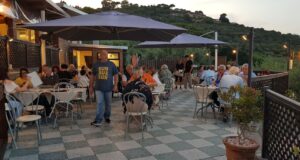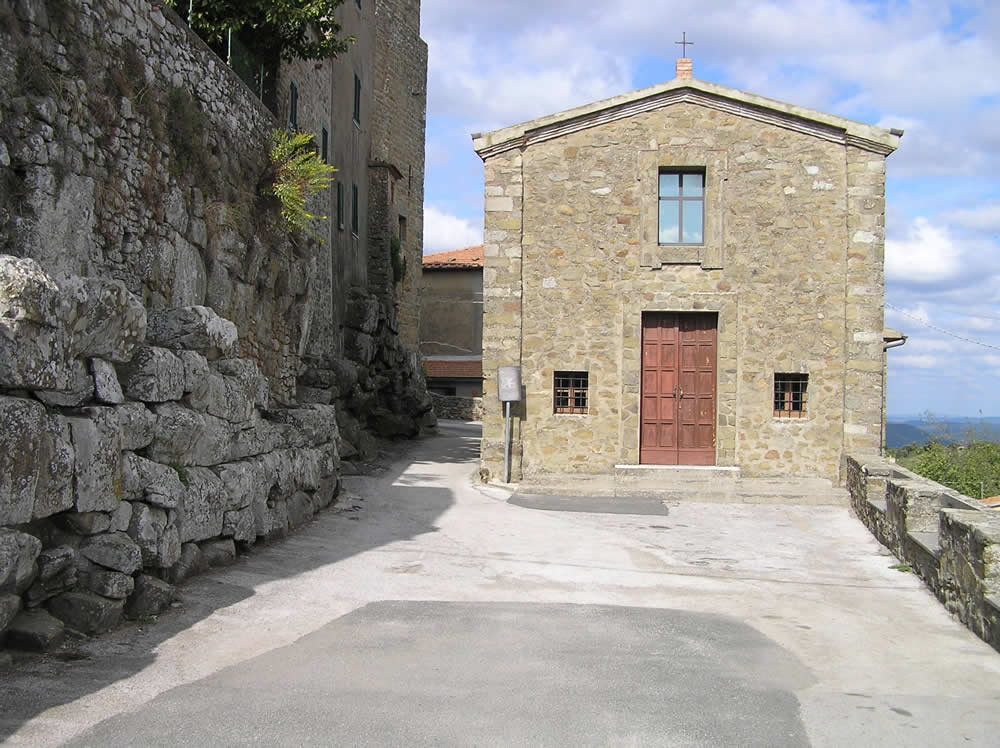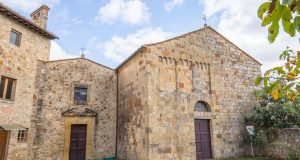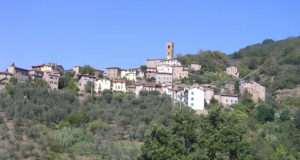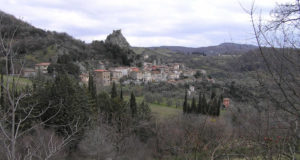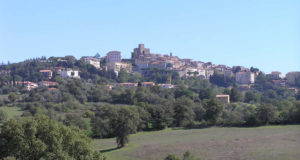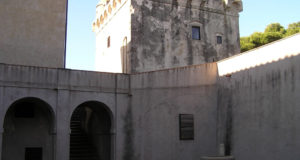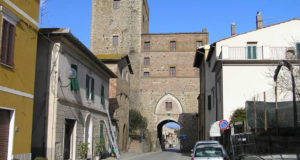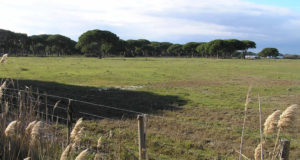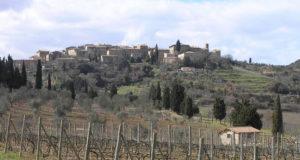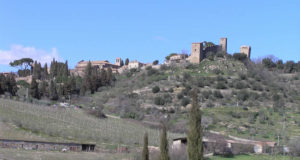![]() Français
Français ![]() Deutsch
Deutsch ![]() Español
Español ![]() Italiano
Italiano
Pitigliano is located in the extreme south of Tuscany on the border with Lazio. It is about 75 km from Grosseto (the shortest route is the one that passes through Istia d’Ombrone, Scansano and Manciano) and about 110 km from Siena (along the Via Cassia, you pass through Monteroni d’Arbia, Buonconvento, San Quirico d ‘Orcia, at Ponte a Rigo, turn right for Sorano).
HISTORY
Pitigliano has been inhabited since the Bronze Age, subsequently, starting from the eighth century BC. it became an Etruscan settlement. Of this presence remains today a short stretch of wall, in large blocks of tuff, in the north-west next to the Porta di Sovana. In the area around Pitigliano, the numerous necropolises further testify to the Etruscan presence.
It was a Roman city and in the Middle Ages it became a fief of the Aldobrandeschi and from 1293 of the Orsini, under the Orsini Pitigliano became the capital of the county of the same name, became a bishopric, supplanting Sovana, and then was named city. With the extinction of the Orsini family, it became a fief of Pietro Strozzi and then of Cosimo I de’ Medici. At the beginning of the 17th century (1608) it became part of the Grand Duchy of Tuscany.
Pitigliano is one of the most scenic villages in Tuscany. In particular, coming from the direction of Manciano, along the state road n° 74, in correspondence with the curve in front of the church of the Madonna delle Grazie, one has a suggestive and scenographic vision of the town in front of him (particularly beautiful in the early afternoon, with the sun behind ) which rises majestically on a tuffaceous rock, between the Lente and Meleta streams.
A VERY SCENOGRAPHIC VILLAGE
The houses of the town are built on the edge of the cliff, forming a single body with it and a rather picturesque whole. The cliff of Pitigliano is surrounded on three sides by ravines which are filled with caves dug into the tuff.
After admiring the stupendous view of Pitigliano from the Church of the Madonna della Grazie, along the road that comes from Manciano, you enter the historic center from Piazza Petruccioli (from the terrace, a beautiful view of the Medici aqueduct) by crossing the gate of the southern bastion of the Rocca. The Rocca, of Aldobrandesca origins, was restructured between 1543 and 1545 by Antonio da Sangallo the Younger, who had two bastions built with a polygonal plan (today transformed into private homes), to replace the pre-existing circular towers.
The historic center is spread over three main streets (via Vignoli, via Roma and via Zuccarelli), almost parallel, connected by a dense road network of alleys. After crossing Piazza Garibaldi where you can see the two stairways that led to the bastions of the citadel, you flank the arches of the Medici aqueduct (built between 1636 and 1639 on a sixteenth-century project (1545) by Antonio da Sangallo the Younger, the The ancient aqueduct of Pitigliano is made up of two large arches supported by an enormous pillar in tufa blocks, dating back to the Medici period, and thirteen small arches built in the Lorraine period.The spectacular building rises sheer on the tufa cliffs.
THE ORSINI PALACE
Three fountains in the adjacent piazza della Repubblica form the terminal of the aqueduct) and you enter the large piazza della Repubblica dominated by the Palazzo degli Orsini, also of Aldobrandesque origin, it was restructured by the Orsini between the end of the 15th and the first mid 16th century. It currently belongs to the Episcopal Curia and is the seat of the Diocese of Pitigliano, Sovana and Orbetello. Palazzo Orsini houses two museums: the Civic Archaeological Museum and the Palazzo Orsini Museum, together with the Municipal Historical Archive and Library and the Diocesan Historical Archive and Library.
Externally the Palace has a characteristic terraced tower, the entrance portal is located at the end of an uphill ramp, which leads to the internal courtyard with a six-arched portico part, a hexagonal well with columns is located next to the portal of access to the Palace, in sculpted travertine and today entrance to the Museum.
CATHEDRAL
Continuing along via Roma you arrive at piazza San Gregorio, where the Cathedral is, with an eighteenth-century facade, the interior has a single nave. Next to the Cathedral is the Loggiato del Palazzo della Comunità and opposite the “Monumento alla progenie Orsina”.
THE JEWISH GHETTO
Behind the Cathedral is the characteristic Jewish Ghetto. In fact, starting from the fourteenth century and then after the definitive expulsion of the Jews from the Papal State in 1569, numerous Jewish families found asylum in Pitigliano, where a substantial Jewish community was formed.
The Jewish Ghetto occupies the area between the Cathedral and the Church of Santa Maria and is characterized by small and narrow streets, the 16th century synagogue, restored in 1995 after years of abandonment, the Archive, the Jewish School and the bakery; outside the village on the road towards Manciano is the small Jewish cemetery.
THE CHURCH OF SANTA MARIA
Continuing from the Cathedral along via Gen. Orsini you reach the beautiful Church of Santa Maria, perhaps the oldest in Pitigliano (12th century), it was restructured between the end of the 15th and the beginning of the 16th century and has a 16th-century facade, the The interior has three naves with frescoes of the Sienese school on the walls. Beyond the church you reach the Porta di Sovana from where you have another beautiful view of the houses of Pitigliano and where you can recognize parts of the Etruscan walls.
Just outside the town (about 800 metres) on the road to Sorano, on the top of a hillock, you can visit what remains of the Orsini Park with rock statues and seats carved into the tuff. Also on the road that leads to Sorano, just outside Pitigliano, are the remains of the Church and Convent of San Francesco, built in 1522 at the behest of the Orsinis on a project by Antonio da Sangallo the Younger, of the church, destroyed by fire in 1911, the perimeter walls and the three side chapels remain standing, while part of the cloister leaning against a farmhouse remains of the convent.
THE “VIE CAVE”
In the surroundings of Pitigliano there are numerous so-called “vie cave”, deep paths obtained by cutting the tuffaceous rock. Some “routes” exceed a kilometer in length, with walls up to 20 meters high. The main ones are that of the Gradone (where there is an interesting didactic-informative open-air museum), of S.Giuseppe, of Fratenuti, of S.Rocco and of the Madonna delle Grazie. Also worth a visit is the archaeological area of Poggio Buco, which houses Etruscan tombs from the 8th – 7th century. B.C.
 Borghi di Toscana Guida ai borghi e ai paesaggi della Toscana
Borghi di Toscana Guida ai borghi e ai paesaggi della Toscana
